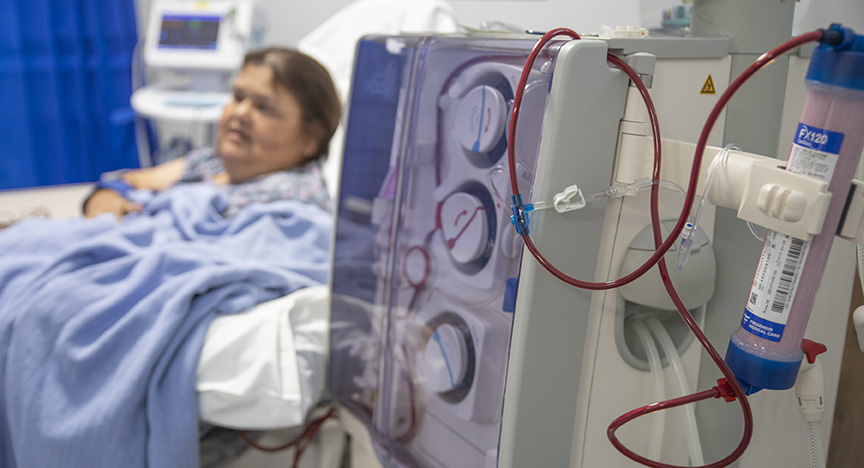
Work on the construction of the first nurse-assisted renal haemodialysis unit at Longreach Hospital is expected to get under way during the first half of 2023.
The new unit is expected to be completed in late 2023.
Central West Hospital and Health Service Acting Chief Executive Anthony West said additional funding had been provided to expand the proposed Longreach dialysis unit from two to three chairs.
Mr West said funding to the Central West Hospital and Health Service for the proposed unit had been increased from an original $2.7 million allocation to $4.6 million to facilitate the expansion.
“Preliminary planning and design indicated the Central West was better served by a three-chair dialysis unit, rather than two chairs as initially proposed,’’ he said.
“Central West Health, with support from the Central Queensland Hospital and Health Service, Clinical Excellence Queensland, and the Health Capital Division, developed a strong business case to support this expansion.
“This business case was successful and additional funding was allocated to allow for this expansion.
“With additional funding secured, Central West Health will now progress to finalising detailed designs for the new unit and call for tenders.
“Tenders are expected to be called early in 2023.’’
Mr West said the new unit also would require the recruitment of specialised nurses to support the service.
“Initially, an additional three specialised nurses and an administration officer will be recruited to support the new dialysis unit,’’ he said.
“Nurse-assisted dialysis is a complex service to deliver, requiring access to specialist medical and allied health support and on-site nursing staff.
“For this reason, Central Queensland Kidney Service has partnered with Central West Health to support the safe provision of dialysis care at Longreach.
“Careful planning to ensure patient safety must always be our primary consideration when delivering any health service such as a new dialysis unit.
“With these considerations in mind, the current timeline is for the new Longreach unit to be fully operational by the end of 2023.’’
Mr West said the proposed new dialysis unit would be located on the ground floor of the South Wing of Longreach Hospital, close to the Allied Health service.
“It should be noted, however, that not all patients requiring dialysis will be suitable to have their dialysis in a nurse-assisted satellite dialysis unit in a rural area or be able to undertake home or self-care dialysis,’’ Mr West said.
“Due to the complexity of their conditions and the clinical requirement for them to have immediate access to highly specialised kidney services that are not available in the Central West, there may always be patients who will need to relocate permanently to a larger centre to access those services.
“But for those who are clinically suitable to use the Longreach service, it will certainly be a major improvement in their lives.’’
The initial funding for the Longreach Hospital dialysis unit was announced as part of a $27.7 million state-wide allocation by the Queensland Government for the expansion of rural and remote dialysis services following a commitment made at the 2020 October election.
On 1 December 2022, a further $6.35 million capital funding was approved, bringing the total commitment to $34.2 million.
Background
Dialysis is the mechanical cleaning of the blood and removal of excess fluid from the body required to sustain life when the kidneys are no longer able to perform this function.
There are two types of dialysis: peritoneal dialysis and haemodialysis.
In peritoneal dialysis the blood is cleansed inside the body using one of the body’s own membranes, the peritoneum, as a filter.
In haemodialysis, blood travels outside the body through tubing to a filter on a dialysis machine to remove wastes and fluids from the blood and balance the blood chemistry before being returned to the body.